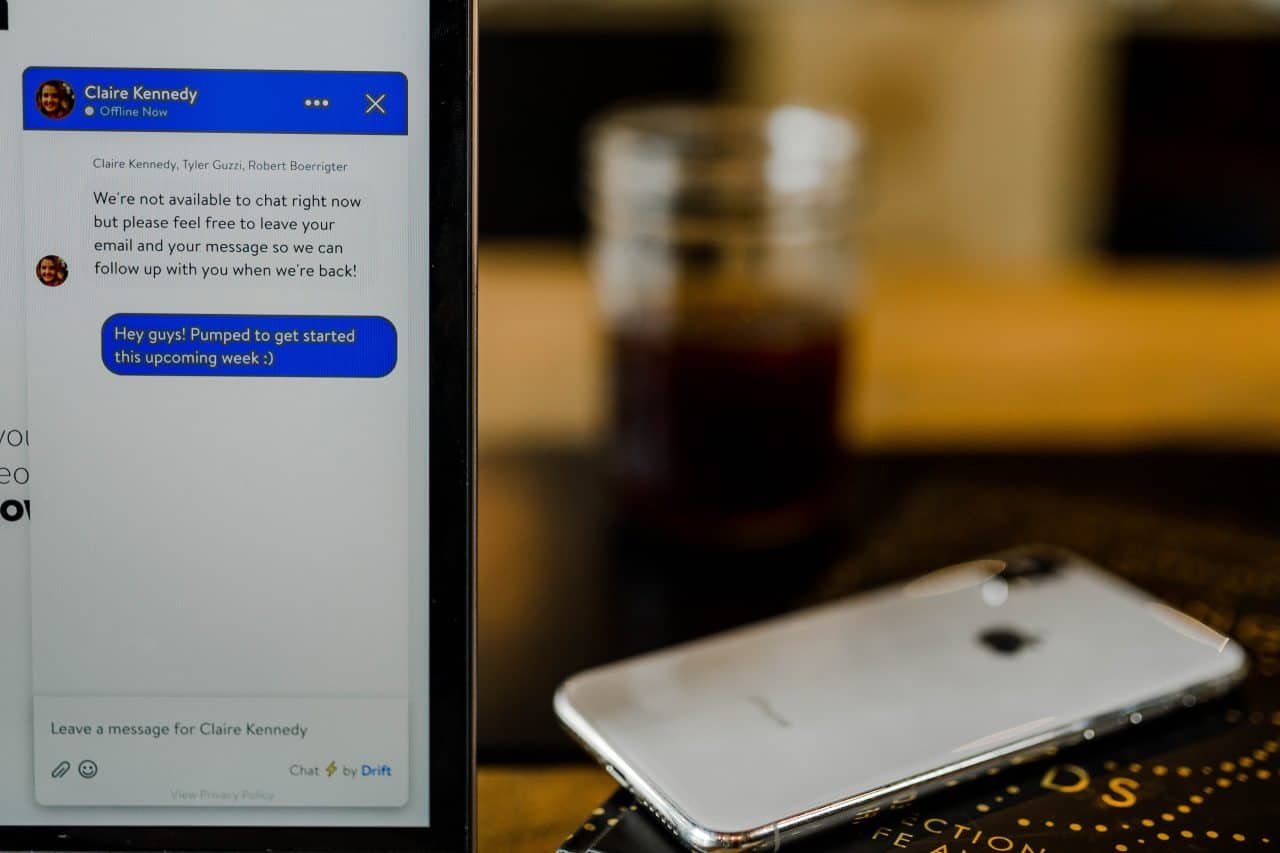Table of Contents

Conversational marketing is a win-win.
Customers are happier by getting their questions answered quickly. And businesses grow faster thanks to increasing customer bases.
But you need good content to make it there.
This time, “good content” means something a little bit different. In content marketing, for example, marketers could go crazy writing detailed guides, articles, and other content. In conversational marketing, they literally write conversations.
This post was created for those who want to do that right.
Below, you’ll find three professional tips on how to write content for chatbots and conversational product FAQ pages.
Why Chatbots and Conversational FAQs?
Okay, let me explain why we’re going to discuss these two.
Before landing on this page, you might have heard about different conversational marketing methods. Here, we’ll talk about chatbots and conversational FAQs because they are really the essence of this approach.
A chatbot is an app that mimics a conversation with a company representative. It’s perfect for lead generation, sales, and customer support, so they let you focus on all major marketing goals.
A conversational FAQ is a product FAQ page collection written in a conversational way. Basically, one can say it’s a continuation of a conversation between a customer and a business focused more on customer experience and service.
Together, they cover all marketing-related areas. So, they work perfectly to improve the overall customer experience for both B2B and B2C businesses.

How to Create Content for Conversational Marketing
Now, let’s talk about how to write customer-focused content for chatbots and conversational product FAQ pages the right way.
1. Learn how to Create Conversations that Make Sense
If you have some experience in copywriting, you might think that your skills are just enough for conversational marketing. Don’t make that mistake.
Conversational copy is vastly different because:
- It’s shorter than anything you’ve ever written before
- It must be structured to be a conversation
- It has two sides of the conversation
- A lack of consistency in using words leads to immediate confusions
- It needs to make sense for a specific group of users.
Let’s demonstrate with a simple example.
Suppose you received this task:
Write a copy for a chatbot for a website that sells vitamins. It will be displayed for first-time visitors.
There are many potential options to start here.
You can begin the “conversation” with the visitor by asking:
- If the user is interested in buying vitamins
- The user’s age (may be needed to generate personalised recommendations)
- If they’re interested in checking out your new range of vitamins.
What do you think?
They are all kinda good, but not perfect for a start.
Why?
The first one is silly because the user is already browsing the site, so they must be interested (no reason to ask again).
The second one might be okay because it gives you something to base your vitamin recommendations on. But, some customers might not get why you’re asking them about their age right away (legal reasons, customer survey, etc.?)
The third one works only in case if the goal of the chatbot is to raise awareness of the new vitamin range. This might not have a lot of value for someone who visited your website the first time and might not know what they’re looking for.
So, just like that, we found that all three don’t make a lot of sense.
So, what does make sense?
“Writers involved in conversational marketing must have the research skills of those working in custom dissertation writing services,” says Melanie Sovann, a chatbot writer. “Without research and understanding of the user, the copy won’t make any sense.”
A good way to start would be to write this:
“Welcome! Are you looking for vitamins to:
- Boost metabolism and weight loss
- Support healthy hair growth
- Fight fatigue.
A simple message like this is perfect to begin helping the user find what they need based on the typical goals of the target audience.
And, most importantly, it simply makes sense.
2. Write Simply and Concisely Like Never Before
Can you imagine a chatbot that asks you a question that takes up a third of your screen?
Okay, I’m exaggerating a bit here, but that’s really the essence of conversational marketing writing. The killer content copy needs to be 100 percent free of fluff because there’s not a lot of real estate to use.
A chatbot widget, in most cases, is very small to avoid covering a lot of content. That’s why each message is typically limited to about 80 characters (15 words).
Take a look at the copy from this chatbot on the Tidio blog.
It has two only two very short sentences.
The first one declares the problem that the blog’s intended readers might have (losing more opportunities to convert website visitors).
If that sentence manages to attract the attention of the reader, they are likely to read the second one. This time, it’s a question that proposes a potential solution: grab the emails of visitors before website visitors leave.
So the copy is both concise (14 words), good enough to attract attention, and it invites the visitor to continue the conversation to solve their problem.
The takeaway for you here is:
Edit your chatbot copy ruthlessly. Do it until it’s as short as possible without losing the value for the customers.
3. Keep FAQs Conversational
The easiest way to think of a conversational FAQ is the question-answer format.
For example, let’s suppose that you’re writing a knowledge base article for a SaaS business. You need to explain how a feature works effectively to increase user retention rate.
You have two ways to go here: traditional and conversational.
The traditional way is to name that article “How X Feature Works” and describe how the user accesses and uses it.
The conversational way is to approach this from the standpoint of the customer. This means describing how that feature solves the problem it was designed for.
Just like in Zegal’s knowledge base.
And here’s what Zegal’s FAQ page looks like.
No boring instructions and walls of text explaining something like a software manual. Just questions that their users have about their product, based on research.
Conversational FAQ pages can be used in combination with chatbots to improve user experience.
They can save a lot of marketing work by helping existing users learn how to use the software effectively. This customer onboarding tactic can help to reduce churn and let the marketing team focus on promoting your products or services.
Besides, your existing customers will be delighted by how much you invest in making everything clear for you. So, use a chatbot to ask them to give you a nice review and share the news about how great your company is.
Speak to Your Customers
Your goal as a writer in a conversational marketing strategy is to create conversations based on customers’ typical needs. That helps with getting both content and context right. No fluff, in-your-face kind of marketing talk, just simple and easy-to-understand questions and answers.
The bottom line here is that your copy must help to make doing business with you personal and easier. So your customers forget about all that sales pressure. If you do that, the benefits will be well worth it.
Dorian Martin is a freelance writing expert interested in digital marketing and copywriting for businesses. An educational writer by training, he was solving challenges like how to write discussion in dissertation, and now he is also helping blogs with content strategies. Thanks to the experience in SEO, Dorian often works on content planning and auditing projects.
This article does not constitute legal advice.
The opinions expressed in the column above represent the author’s own.
Start managing your legal needs with Zegal today
READ MORE: Legal Considerations When Starting A Small Business





